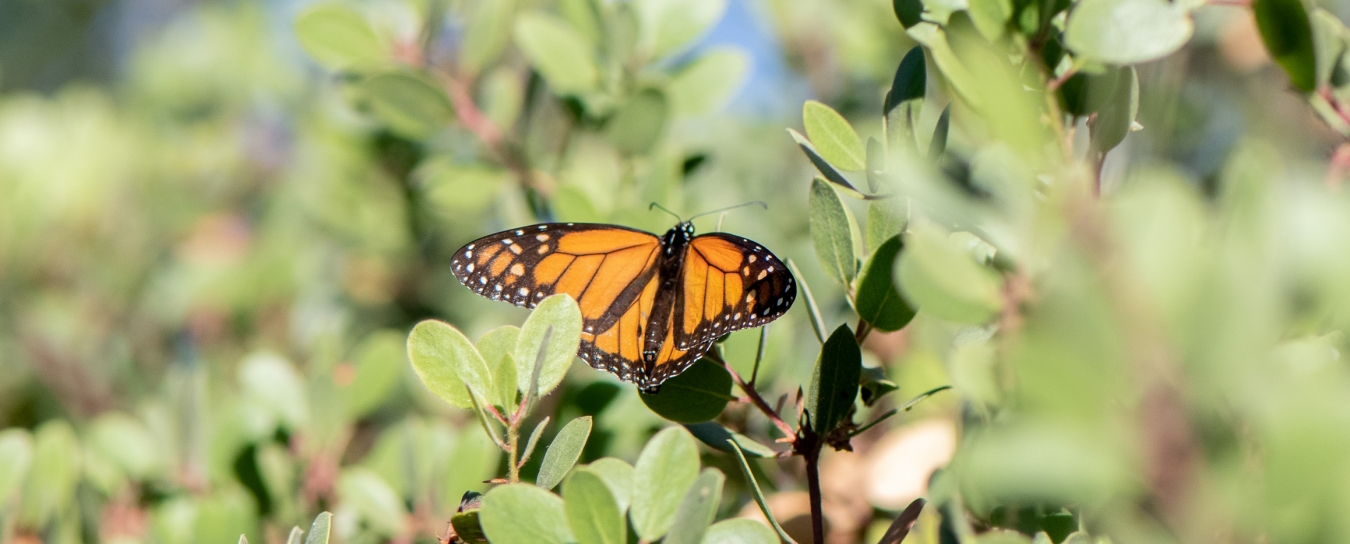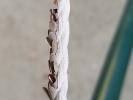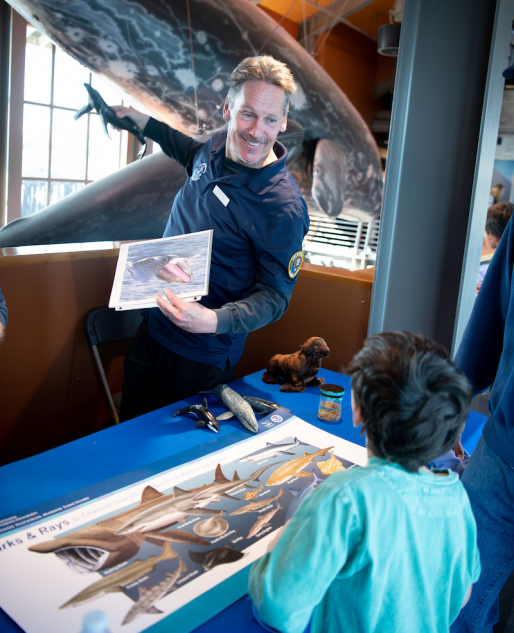
Invertebrates
See our handy guide to critters found in local homes and our Central Coast Butterfly FAQ. Browse the insects and other terrestrial arthropods we’ve identified. Check out local marine invertebrates, particularly bivalve mollusks and intertidal organisms.
- Anthropology
- Rocks & Fossils
- Invertebrates
- Vertebrates
- Botany
- Astronomy
- Fungi
- General
- Recently Asked
Found egg casings on a hammock rope. What are these?
An Edhat poster sent in a photo of these egg casings. The hammock was outside and then stored for the winter, so it could be an indoor or outdoor egg-laying insect. Please i.d.
Thank you ever so much.
Curator Response
Hi Lisa,
These appear to be the eggs of a katydid, a member of the family Tettigoniidae. Adults are in the same general group as and are similar to grasshoppers, but are usually bright green (sometimes brown or even pink!) and leaf-like, have longer legs, and have much longer, hairlike antennae, which are as long as the body or longer. Most are large (over 1 inch) when mature, and most eat various sorts of vegetation (but some are predators). The females have a blade-like ovipositor which they normally use to deposit their eggs exposed on twigs and leaves. In this case, the female chose a hammock line as her substrate. Egg-laying for these critters generally happens during late summer or fall. These eggs were certainly laid while the hammock was outside, and probably laid before it was put away for the winter. It appears that some of the eggs may have hatched, but perhaps the unopened ones did not fully develop as a result of being stored inside.
The culprit was probably one of the two common angle-wing katydids (Microcentrum) we have in this area. However, California has a whopping 92 known species of katydids—based on my investigation of a few sources, we can expect at least 17 species in the Santa Barbara area. The appearance of the eggs and the egg-laying behaviors are known for very few of these species.
Schlinger Chair of Entomology Matthew L. Gimmel, Ph.D.
Photo by Wyatt Ginder, used by permission.



